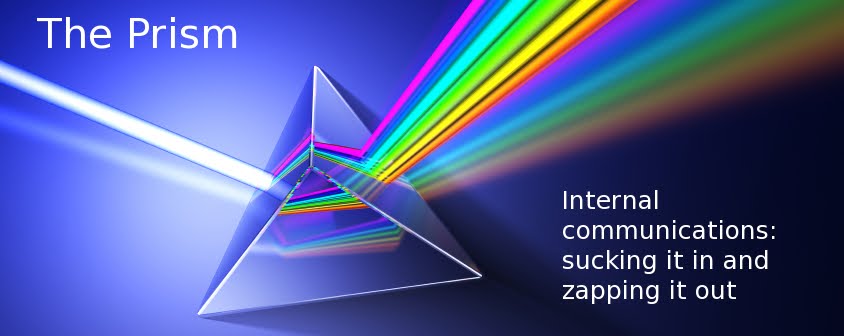I recently
added a comment on a forum that asked the following: “You have some urgent news
to share with a large group of employees. What's your preferred communication
medium?”
Your
first thoughts might be the same as mine: (1) it depends and (b) you likely need
more than one.
Depends
on whether the news is just urgent, or urgent and important, or urgent and
important and complex. And depending on the answer to that tells you what channels you need to use.
I’ve used
these three dimensions for a number of things – not just to help with channels
but also to help with allocating projects to people within internal comms
departments. I thought I’d share it with you as you might find it useful.
It works
best if you consider each of the three dimensions and decide which is driving
the need to communicate. The other two may or may not be relevant – this is
your secondary consideration.
Urgency first
Clearly
you need something that’s immediate and ‘push’ – email, voice (voicemail or
phone blast), text, or intranet if you can be sure that people will have it
open and will see it. In extreme cases you need the comms equivalent of pushing
the fire alarm button!
It is worth
differentiating between what’s really urgent and what isn’t. Many customers seem
automatically to say that their stuff is urgent (particularly those who are
rubbish at planning).
Importance first
Here you
need a range of channels that build on each other. Follow-through is important
– the effort is often put into the launch of something important but
maintaining the momentum can be difficult, particularly if other new shiny
things come along to take its place. Leaving our people saying in a few months’
time “whatever happened to that project?” You need to keep the interest alive
so it retains its importance.
Complexity first
Although
it’s nice to simplify, some things are just complex either because of the
subject matter or because of the number of strands that need to be fitted
together. Here you might need to undertake some additional stakeholder analysis
– what’s complex to one lot of people may not be to another. Technology and
financial projects often fall into this category.
The
‘what-does-it-mean-to-me’ question is always important, but is particularly so
here. One of the most complex communications I worked on was required to
explain to senior management how their bonus was constructed. It was fiendishly
complicated and they were understandably anxious to be able to work it out for
themselves. It needed a 17-page PDF to build up the picture of four different
elements each with different weighting.
But at least they understood it…Nobody else (apart from HR) needed to.
What does it mean for channel
selection and management?
The
impact of these on your channel selection depends on a number of factors
amongst which are:
· the extent to which you need both
one- and two-way communication (just urgent may need only one-way unless you
want to know how well it worked)
· leadership visibility after the
initial communication (really useful for strategic stuff)
· continuing support for line
managers (like when you have widely different audiences – managers can tell you
what else their people need to know)
I’m a
great advocate of using a number of different channels to reinforce and support
the message. More on this in a future post...
One last
thought: I read this in a report on the 2012 Edelman Trust Barometer: “the
average person needs to hear a story three to five times from different sources
before they believe it”. So there is an
additional challenge in repeating the message but in interesting ways so that
people are not bored by it. A difference between repeating and reinforcing...
Any views?
Any views?

No comments:
Post a Comment